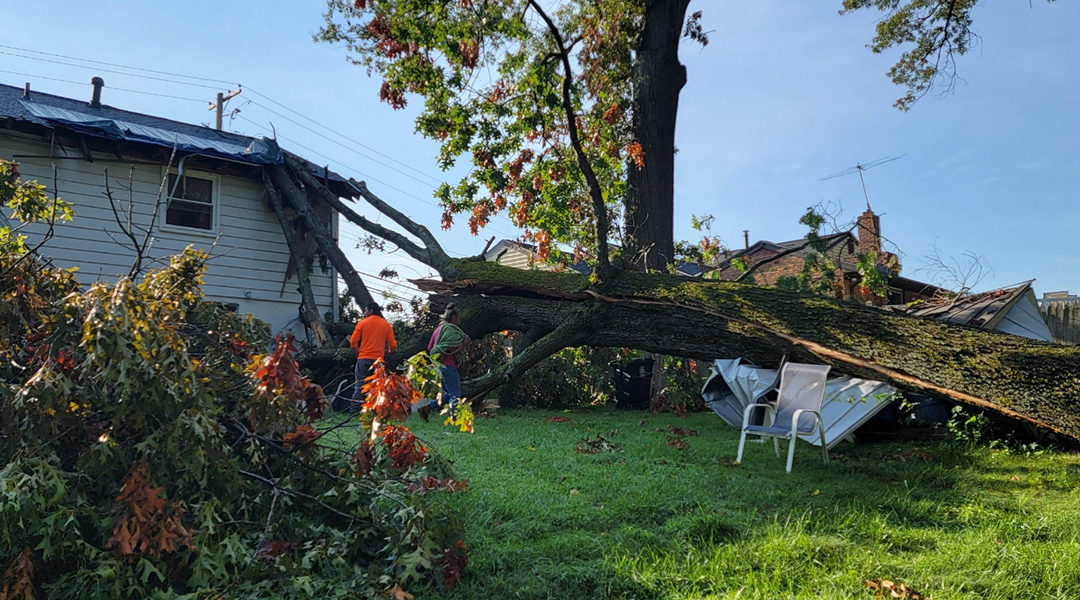Tree diseases are the bane of any property owner looking to boost the visual appeal of their property with plants. Not only do these diseases kill our trees and turn them into eyesores, but they can also spread to our other vegetation and slowly destroy all plants within the area.
There are five prevalent tree diseases in Maryland, and it is vital to identify the signs of each of them. By knowing enough about common tree diseases, how they spread, and which plants they can affect, you can combat these pesky infections and prevent them from ruining your landscape.
Root Rot
Root rot is a harmful fungus that primarily affects trees planted in sandy or overly damp soils, such as pine and evergreen trees. As the name suggests, root rot contaminates and slowly destroys the trees’ root systems, eventually killing them.
The most common root rot symptoms are discolored wood near the tree’s base, excessive needle loss, separating or dead bark, and improper tree growth.
Root rot is one of the most prevalent tree diseases in Maryland. Because it grows below ground, it will affect the soil even after removing the original tree and contaminate future plants in the area. Luckily for Maryland residents, Hernandez Complete Tree Service, Upper Marlboro’s trusted tree removal team, can remove all diseased roots and trees and help the soil regain its health.
Brown Rot
Brown rot is another tree disease resulting from fungus, primarily affecting cherry trees. Rather than contaminating the roots like root rot, brown rot settles into cherry blossoms and shoots and infects the tree from there. The fungus commonly reaches trees via wind or insects.
If your cherry trees begin growing withered, discolored leaves or produce brown blossoms, they likely have brown rot.
Oak Wilt
Oak wilt is a disease primarily affecting black and red oak trees. When an oak tree begins to wilt, its leaves turn half brown and half green, often divided by a horizontal line separating the two colors. Additionally, oak wilt will force the leaves to die and fall off their branches in the summer.
Bacterial Leaf Scorch
Leaf scorch results from bacteria that grow in a tree’s vascular tissue and prevent water from reaching the roots. Leaf scorch most commonly affects shade trees, such as oak, elm, and maple.
The bacteria spread via infected insects that feed on shade trees, like spittlebugs and treehoppers. If the disease spreads, the leaves on the tree will start to brown and slowly die off.
Only the leaves closest to the root system will be affected in the early stages of bacterial leaf scorch. If the growth continues uninterrupted, it will spread to the entire tree.
Fire Blight
Fire blight is a bacterial disease that commonly affects fruit trees like apple and pear plants. The biggest spreaders of fire blight are tree pollinators carrying the bacteria.
If your fruit trees produce brown or black leaves toward the tips of the branches, the plant most likely has fire blight.
Care for Your Trees with Hernandez Complete Tree Service
Even when you know the telltale signs for common tree diseases in Maryland, it is challenging to stop them on your own. But with Hernandez Complete Tree Service, you will have the help of local experts on all the native trees in Maryland.
With our tree services, including trimming, stump and root removal, storm cleanup, and more, you can keep your landscape looking as healthy as ever, even after tree disease strikes your property and causes issues like curling in leaves.
Call Hernandez Complete Tree Service today to receive a free estimate.


